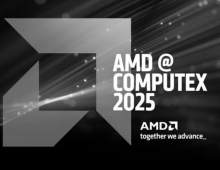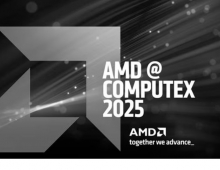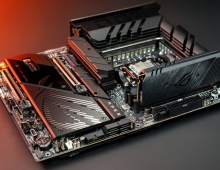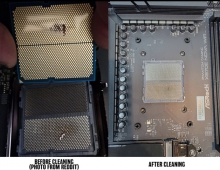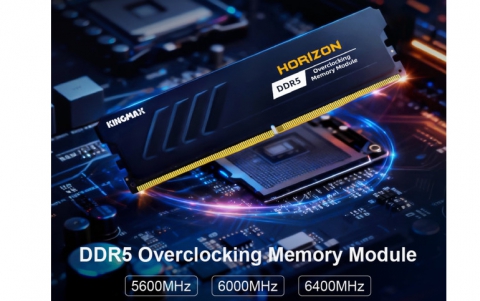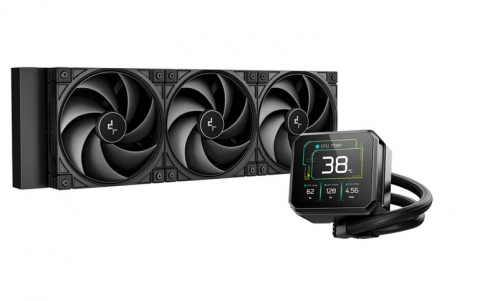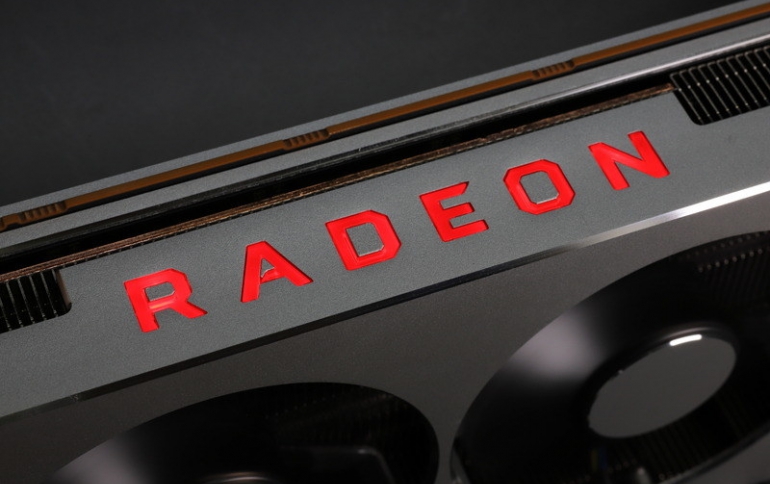
AMD Radeon VII is Available Now
AMD’s next high-end graphics card for gaming and content creation has arrived: the Radeon VII, the first 7nm gaming graphics card, hits shelves today.
The new graphics card brings 1 TB/s of memory bandwidth and 16 GB of HBM2 memory in as a supercharged “Vega” architecture to gamers, creators and enthusiasts everywhere.
The Radeon VII is AMD's first truly high-end 4K GPU, capable of surpassing 60 frames per second at High or Ultra settings. Radeon VII is also the first AMD graphics card that shifts away from reporting the GPU temperature alone to monitoring an array of 64 thermal sensors spread across the die. Radeon Software’s Wattman overclocking tool reports both the new Junction Temperature as well as the standard GPU temperature.

However, the $700 Radeon VII seems to trade performance blows with the similarly priced Nvidia GeForce RTX 2080 and even the two-year-old GTX 1080 Ti, according to various reviews.
In terms of specs, the Radeon VII features a 4,096-bit memory interface, compared to Vega 64’s 2,048-bit interface, giving the card an overall memory bandwidth of 1 terabyte per second. By comparison, Vega 64 offers 484GBps of memory bandwidth; the GeForce RTX 2080 offers 448GBps; and the RTX 2080 Ti offers 616GBps.
Nvidia’s recent embrace of adaptive sync monitors eliminates AMD’s FreeSync monitor pricing advantage. And AMD’s graphics card lacks the real-time ray tracing hardware offered by GeForce RTX GPUs, though very few games take advantage of those capabilities at this point.
AMD tuned the Radeon VII to run at much higher clock speeds than Vega, with maximum boost clocks roaring ahead by more than 200MHz. AMD also optimized the second-generation Vega architecture to provide lower latency, as well as more bandwidth to the render output units (ROPS).

The shift from a 14nm to 7nm manufacturing process allowed AMD to shrink the GPU die from 495 square millimeters in Vega 64 to 331 in Radeon VII. As a result, the company crammed two more 4GB stacks of HBM memory onto the chip, bringing the total number of stacks up to four and the total memory capacity to 16GB. That’s twice as much as you’ll find in Nvidia’s RTX 2080, and even 5GB more than you’ll find in the lofty $1,200 GeForce RTX 2080 Ti.
AMD emphasizes in the importance of the increased memory on teh new card, touting benefits to gamers and content creators alike. Editing 4K or 8K videos can monopolize tremendous amounts of memory. Radeon VII can obviously handle those workloads without breaking a sweat.
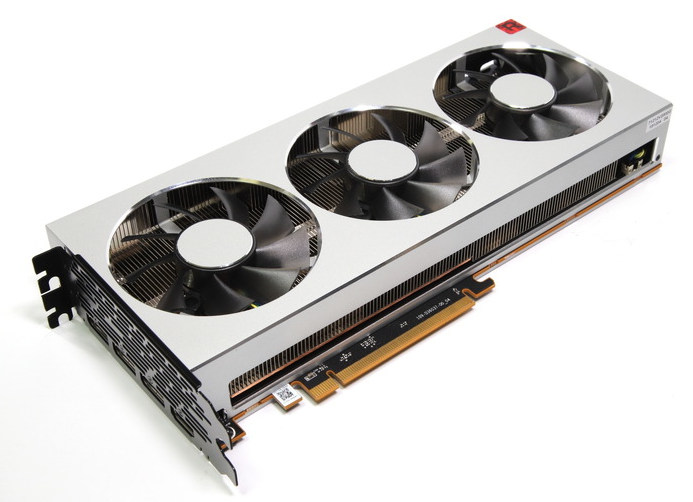

Radeon VII also comes loaded with connectivity options, in the form of an HDMI port and three DisplayPorts. It lacks the VirtualLink USB-C connector that debuted in Nvidia’s RTX 20-series GPUs, but virtual reality headsets that support the newly created standard don’t exist yet, anyway. The card requires a pair of 8-pin power connectors to supply the 300 watts of energy needed to fuel it—a mere 5W increase over the Vega 64.
The card itself is returning to the stark brushed aluminum design introduced in the rare Radeon RX Vega 64 Limited Edition. But the Radeon VII follows in the footsteps of Nvidia’s GeForce RTX Founders Edition cards by switching to a more traditional multi-fan (3) setup that pushes the heat dissipated by your GPU into your case instead.


A red cube with a “Radeon” R lights up the outer corner of the graphics card when it’s running, an aesthetic matched by an illuminated red Radeon logo on the edge of the card.
The Radeon VII also supports FreeSync 2 HDR, virtual super resolution, the Radeon Overlay, per-game overclocking, and all the other nifty features baked into AMD’s superb Radeon Software Adrenalin 2019 edition. For a limited time, AMD will also toss in three free games—The Division 2, Devil May Cry 5, and Resident Evil 2—when you buy the Radeon VII.
Priced at $700, the Radeon VII seems to be a good solution if you’re hunting for a high-performing graphics card capable of playing games with few visual compromises at 4K resolution, or ultra-fast 1440p. However, AMD's new card is not faster than the RTX 2080, and expect an almost similar real-world performance. But if you create high-resolution videos when you’re not gaming, you might want to opt for the Radeon VII over the GeForce RTX 2080.





